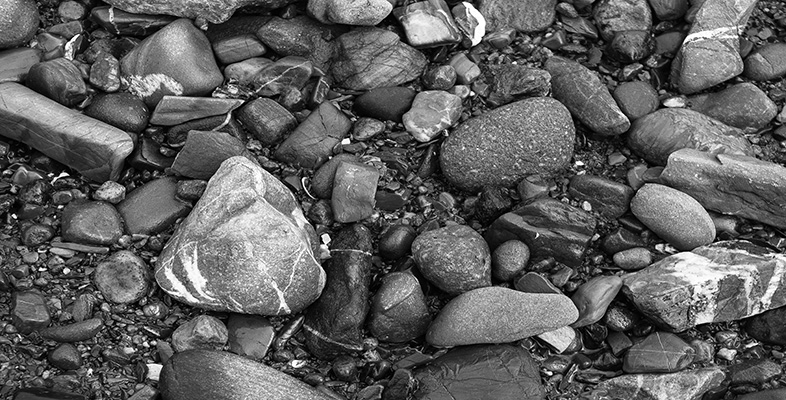1.9 Changing sea-level
Sedimentary rocks reveal how environmental conditions in Britain's geological past were extremely different from those of the present day (in fact ‘Britain’, like the rest of the Earth's geography is transitory when viewed in terms of the very long span of geological time). As well as evidence from sedimentary rocks, recent landforms also indicate that in the more recent geological past (within the Quaternary Period), sea-level was not the same as it is at present.
Activity 12
What deposits could we look for that might suggest that sea-level was once higher than at present?
Answer
Beaches today generally have a mixture of pebbles or sand, along with shells and shell fragments. So, if we found such a deposit perched on a cliff above the present high-water mark, we could infer that since it was deposited, there has been a fall in sea-level, leaving behind a raised beach.
Raised beaches, sometimes backed by an ancient cliff line, are common features around Britain's coast. Before explaining this observation, we need to ask ourselves has the sea-level fallen, or has the land risen? Both are feasible. For instance, sea-level can fall relative to a fixed landmass if the volume of the oceans shrinks due to cooling and the formation of land-based ice-caps. Similarly, it will rise if these ice caps melt. It so happens that since 2 to 3 million years ago the Earth has been experiencing an ice age – a prolonged period of alternating glacial and interglacial periods characterised by the presence and absence of large polar ice-caps. We are living in an interglacial period that became established about 10 000 years ago. As the volume of ice increases and decreases throughout an ice age, so the volume of the oceans decreases and increases. Some raised shorelines can therefore date from a previous interglacial period when the ocean volume was larger, and hence sea-level was higher than today's.
Nature is not quite so straightforward, however, because the development and removal of thick ice sheets on land surfaces has an effect on the elevation of the land, relative to sea-level. In the last glacial period much of Britain was covered by an ice sheet up to 1.5 km thick for some 60 000 years. As this ice sheet melted, Britain was relieved of the enormous weight of the ice sheet, allowing the land to ‘bounce back’ in the manner of a ship rising out of the water when a heavy cargo is unloaded, with the result that the land moved relative to sea-level, producing raised shorelines. A complex interplay of changing climate and Earth movements is therefore involved in producing many of the geologically recent coastal landforms of the British Isles. In addition, we can remark that concerns about contemporary sea-level rise relate to yet a further process – that of rapid ocean warming accompanied by the expansion of seawater volume.
